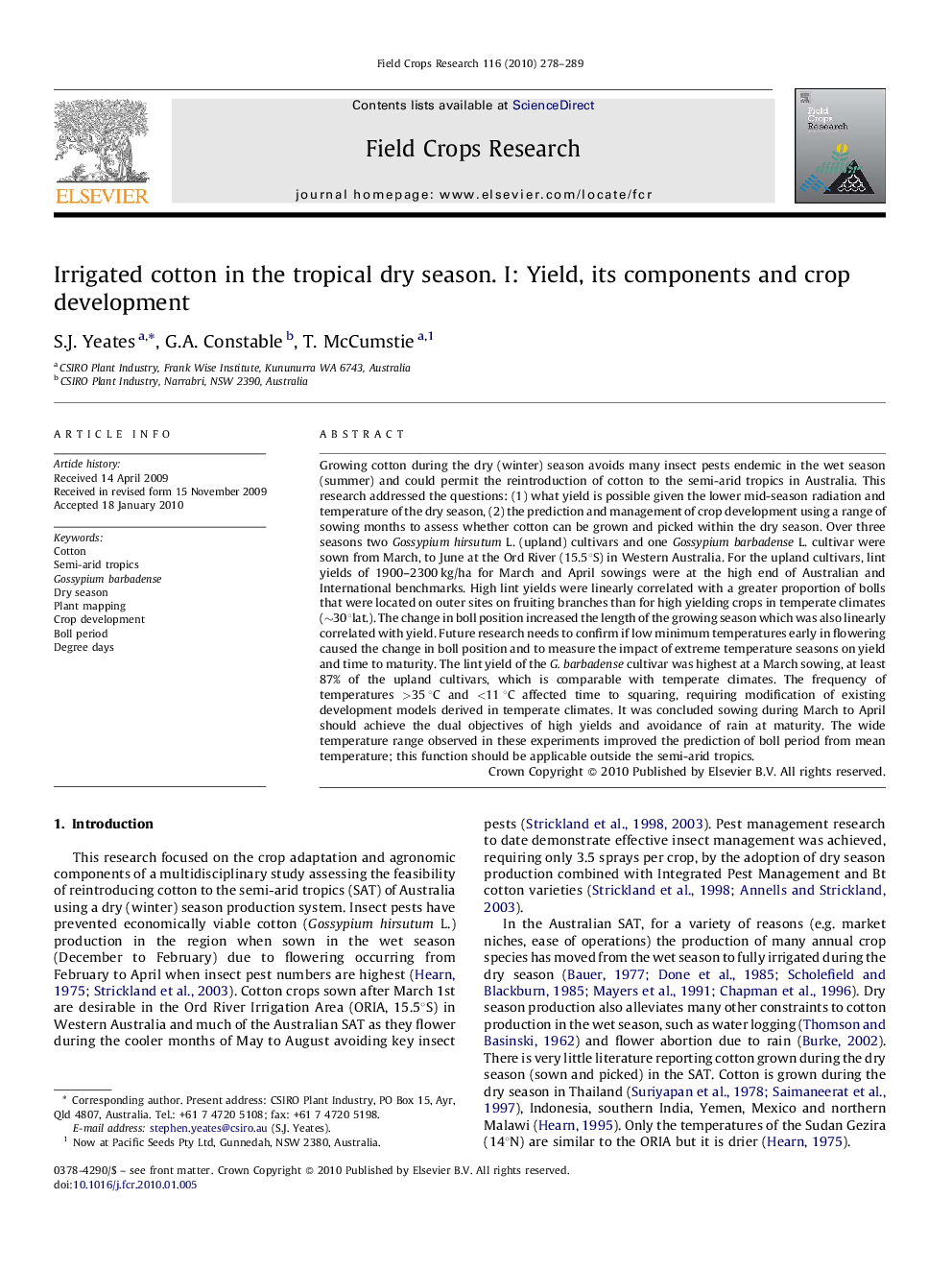| کد مقاله | کد نشریه | سال انتشار | مقاله انگلیسی | نسخه تمام متن |
|---|---|---|---|---|
| 4510928 | 1321882 | 2010 | 12 صفحه PDF | دانلود رایگان |

Growing cotton during the dry (winter) season avoids many insect pests endemic in the wet season (summer) and could permit the reintroduction of cotton to the semi-arid tropics in Australia. This research addressed the questions: (1) what yield is possible given the lower mid-season radiation and temperature of the dry season, (2) the prediction and management of crop development using a range of sowing months to assess whether cotton can be grown and picked within the dry season. Over three seasons two Gossypium hirsutum L. (upland) cultivars and one Gossypium barbadense L. cultivar were sown from March, to June at the Ord River (15.5°S) in Western Australia. For the upland cultivars, lint yields of 1900–2300 kg/ha for March and April sowings were at the high end of Australian and International benchmarks. High lint yields were linearly correlated with a greater proportion of bolls that were located on outer sites on fruiting branches than for high yielding crops in temperate climates (∼30°lat.). The change in boll position increased the length of the growing season which was also linearly correlated with yield. Future research needs to confirm if low minimum temperatures early in flowering caused the change in boll position and to measure the impact of extreme temperature seasons on yield and time to maturity. The lint yield of the G. barbadense cultivar was highest at a March sowing, at least 87% of the upland cultivars, which is comparable with temperate climates. The frequency of temperatures >35 °C and <11 °C affected time to squaring, requiring modification of existing development models derived in temperate climates. It was concluded sowing during March to April should achieve the dual objectives of high yields and avoidance of rain at maturity. The wide temperature range observed in these experiments improved the prediction of boll period from mean temperature; this function should be applicable outside the semi-arid tropics.
Journal: Field Crops Research - Volume 116, Issue 3, 3 April 2010, Pages 278–289